Farmhouse Style: Windmill Power Comes Around Again
There is something powerful about the sight of a tall windmill. For many of us, the towering structures are as familiar as a red barn, a white farmhouse or a dirt road in the country. It’s an icon that is seemingly embedded in our DNA, and the sight of spinning metal blades can make a person homesick.
For our ancestors windmills had less nostalgic and more practical appeal. They became popular around the middle of the 19th century, when America’s plains and prairies were still being settled. After land was obtained for farming, the challenge was getting water for the livestock. Legend has it that a traveling salesman came up with the idea of using wind — a seemingly endless resource blowing across the flattest part of the country — to power well pumps. After a few false engineering starts (it’s hard to stand up to a prairie wind), the windmill was born.
Today there are still people who use windmills for their intended water-pumping purpose, but just as many, if not more, use them strictly as decoration. Whether the windmill operates or not, its aesthetic appeal works.
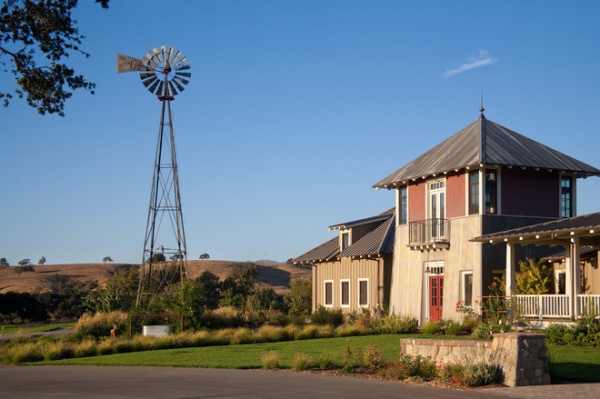
Early American windmills were used anywhere power was needed, according to a windmill history penned by manufacturers at the Ironman Windmill Company, the creators of the first high-capacity windmill pump. Not only did they pump water, but they operated farm and factory equipment. The first windmills were crafted from wood, which proved to be hard to maintain. Material and engineering improvements led to the development of all-metal windmills, which were able to wrest water from 1,200 feet down in the ground.
This home, by architect Tom Meaney, is done in the style of early agricultural buildings in California’s Santa Ynez Valley. Completing the look is a 100-year-old windmill that spins but doesn’t pump water. The tail (the rudder-like piece behind the blades) bears the name of the Aermotor Windmill Company, a business that has been operating since 1888.
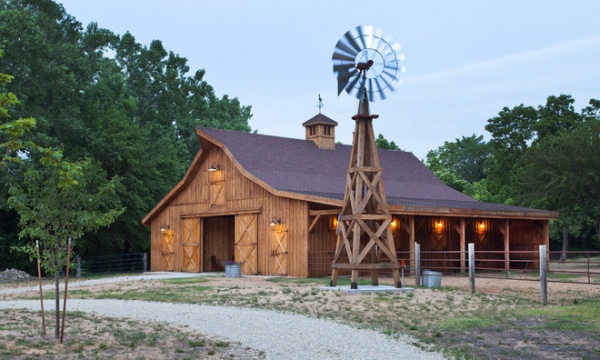
Sand Creek Post & Beam, a custom-design barn company, also offers windmills. “We are seeing an increase in requests for them,” says Cody Wortmann of the company. “We build the tower and use Aermotor blades.”
Wortmann estimates that 90 percent of the windmills that Sand Creek Post & Beam puts up, including this wooden tower model the company built in Kansas, are for decorative purposes only. “People love them because of their history — it’s part of this country’s farm culture,” he says.
For this property, owned by Doug and Debbie Smart, the windmill was on the wish list. “They both grew up on farms,” says Wortmann. “And they wanted to give their new property a historic feel.”
The Smarts say the windmill was the finishing touch on their dream come true, adding that strangers come to the house to tell them how much they like it.
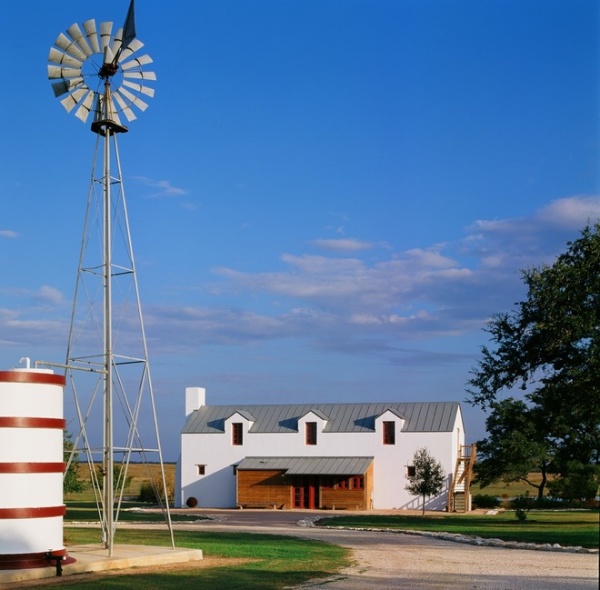
The windmill outside this home, by architect Michael Imber, has a sculptural form, but it has a very functional purpose. It pumps water into the tank at the left, where the water is held until it’s needed on the farm.
Learn about this property’s colorful history
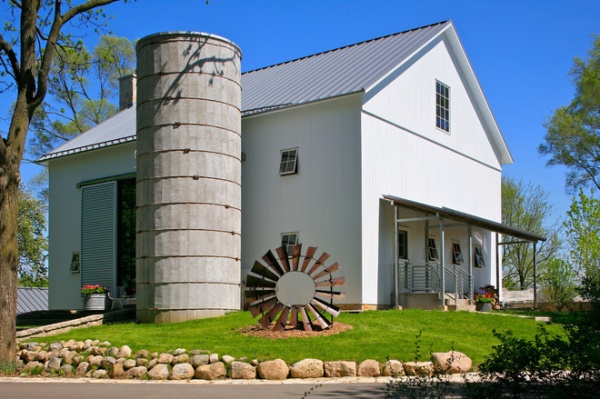
In this restored Michigan barn, an installation of windmill blades really is a sculpture — one with meaning. It rests near the building’s original grain silo.
See the entire project
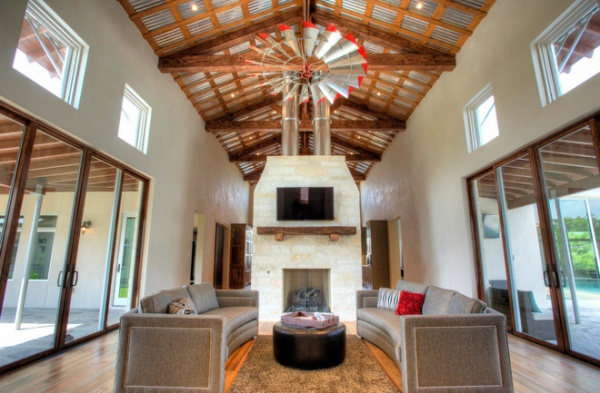
The windmill in this project, built by Joubert Design Build, is another eye-catching and unconventional installation. “We custom made this windmill fan,” says Charles Bower. “It is an authentic 6-foot windmill. It has three speeds and has a remote control. The entire unit weighs 250 pounds. … It is the focal point in that space.”
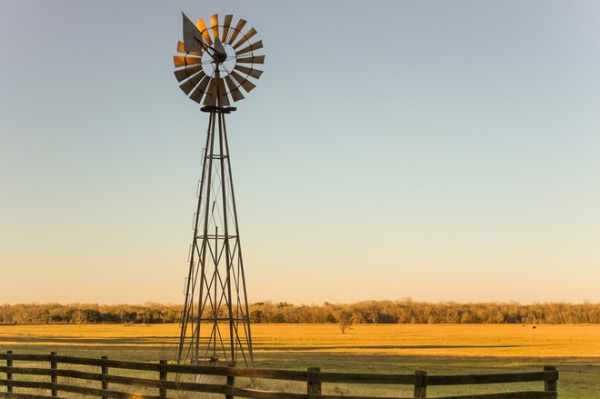
The desire for an iconic form has led to a brisk market for antique and vintage windmills, either whole or in parts. Terry Rodman, a Minnesota collector and dealer who hunts for windmills around the country, was quoted in an article on the topic as saying: “Often I will see an abandoned windmill, and I will inquire if it is available. Sometimes they are willing to part with the windmill, but people have a funny thing about them. Very often, even though it has not been in use or even kept up for years, they will still have a sentimental attachment to it and don’t want to part with it.”
More
Roots of Style: American Farmhouses Pay Tribute to Regional Traditions
9 Vacation Farmsteads Offer a Taste of Country Life
Tell us: What do you think of windmills? Do you know anyone who has one?












